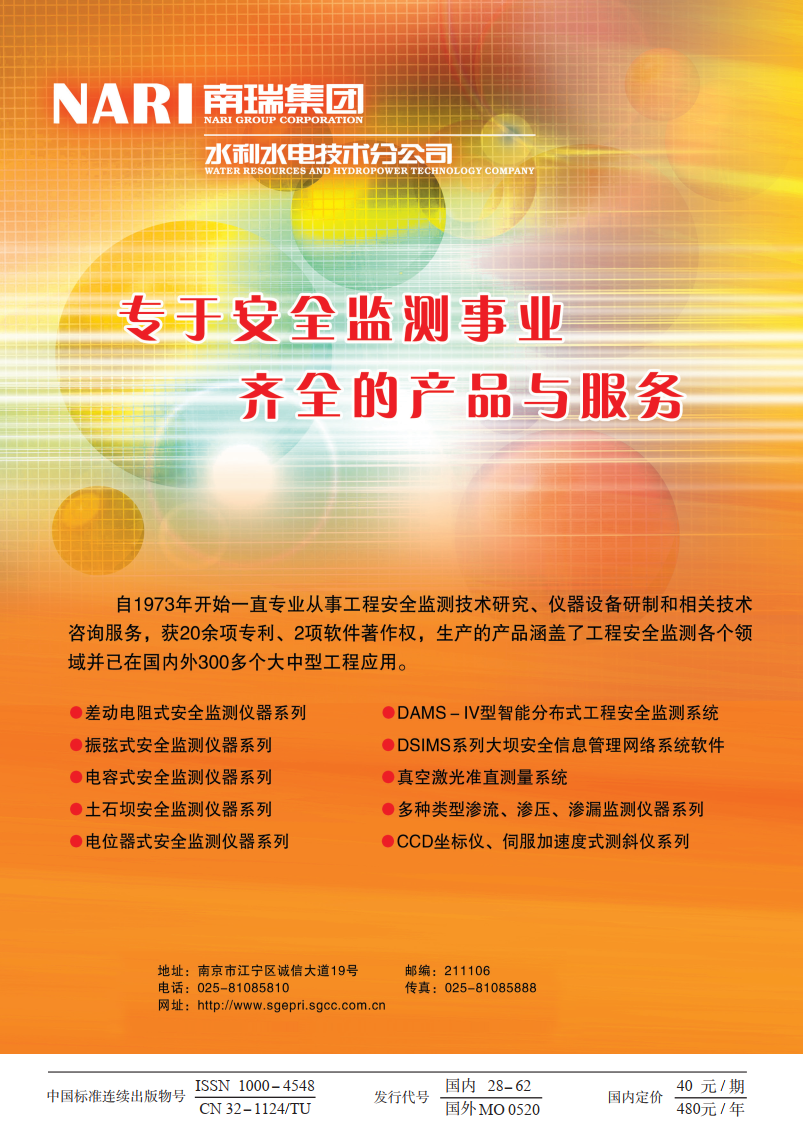降雨优势入渗下浅埋偏压黄土隧道变形破坏机理分析 English Version
Analysis of deformation and failure mechanism of shallow buried bias loess tunnel induced by fracture dominant infiltration under rainfall environment
-
摘要: 水环境的改变是诱发黄土隧道灾害的主要因素,而优势通道的存在对于围岩中水分入渗起到重要作用。以偏桥隧道为工程背景,在现场调研的基础上,通过开展物理模型试验和数值模拟探究了降雨期间优势通道的演化过程、入渗特征及隧道结构响应规律,进一步揭示了裂隙优势入渗诱发黄土隧道变形破坏机理。结果表明:优势通道的孕育发展是“新”裂隙的形成与“旧”裂隙的延伸扩大共同耦合作用下的结果。在优势通道影响下,入渗模式从稳态入渗逐渐转变为裂隙控制的优势流入渗,改变围岩水分迁移路径的同时加快了水分渗入深部围岩。随着裂隙深度的增加,优势渗流影响范围越来越大,浸润锋形态逐渐由“曲线型”变为“漏斗型”。裂隙末端形成的局部暂饱和区加剧了围岩变形,使得隧道受力表现出明显的不对称性,其中优势运移通道下侧隧道结构所受影响最为突出。当出现贯通裂隙时,优势入渗所引起的隧道拱顶沉降达到56.3 mm,结构应力增值相较于均匀入渗增大140 kPa。Abstract: The change of water environment is the main factor inducing loess tunnel disasters, and the existence of dominant channels plays an important role in the infiltration of water into the surrounding rock. Taking the Pianqiao Tunnel as the engineering background, based on on-site research, the evolution process, infiltration characteristics of dominant channels, and tunnel structural response laws during rainfall were explored through physical model experiments and numerical simulations, further revealing the deformation and failure mechanism of loess tunnels induced by crack dominant infiltration. The results indicate that the development of dominant channels are the result of the coupling effect of the formation of "new" cracks and the extension and expansion of "old" cracks. Under the influence of dominant channels, the infiltration mode gradually changes from steady-state infiltration to fissure controlled dominant infiltration, changing the migration path of surrounding rock water while accelerating water infiltration into deep surrounding rock. As the depth of the crack increases, the range of influence of dominant infiltration becomes larger, and the infiltration front gradually changes from "curved" shape to "funnel-shaped" shape. The local temporary saturation zone formed at the end of the crack intensifies the deformation of the surrounding rock, resulting in a significant asymmetry in the stress distribution of the tunnel, with the tunnel structure under the dominant channels being most affected. When a through crack appears, the settlement of the vault caused by dominant infiltration reaches 56.3 mm, and the structural stress increases by 140 kPa compared to uniform infiltration.
-
Keywords:
- Loess tunnel /
- Shallow buried bias /
- Dominant infiltration /
- Water migration /
- Failure mechanism
-
期刊类型引用(14)
1. 侯公羽,邵耀华,张世欧,赵铁林,刘春雷. 锚杆预紧力对锚固岩体力学性能改善的试验研究. 岩石力学与工程学报. 2025(02): 261-275 .  百度学术
百度学术
2. 李军臣,吴拥政,付玉凯,何思锋,孙卓越,周鹏赫. 加锚煤样动态力学性能及变形破坏机制试验研究. 岩石力学与工程学报. 2025(04): 912-925 .  百度学术
百度学术
3. 李豪逸,左双英,陈世万,杨冲,田娇. 含层理加锚灰岩单轴压缩力学特性及变形全过程统计损伤模型. 工程地质学报. 2024(02): 481-491 .  百度学术
百度学术
4. 李庆文,禹萌萌,高森林,刘艺伟,曹行,曾杏钢,黄筱. 加载速率对碳纤维布被动约束煤能量演化的影响. 煤炭学报. 2024(S1): 236-247 .  百度学术
百度学术
5. 梁东旭,张农,荣浩宇. 基于锚固剂环裂纹扩展的全长锚固脱黏失效机制研究. 岩石力学与工程学报. 2023(04): 948-963 .  百度学术
百度学术
6. 韦四江,翟黎伟,王猛,高继耀,王生柱,李鑫鹏. 不同速率加锚煤样抗拉力学响应特征试验研究. 采矿与安全工程学报. 2023(03): 458-466 .  百度学术
百度学术
7. 陈绍杰,冯帆,李夕兵,王成,李地元,ROSTAMI Jamal,朱泉企. 复杂开采条件下深部硬岩板裂化破坏试验与模拟研究进展和关键问题. 中国矿业大学学报. 2023(05): 868-888 .  百度学术
百度学术
8. 宋硕,任富强,常来山. 含预应力锚杆煤岩组合体破坏及声发射特征试验研究. 岩土力学. 2023(S1): 449-460 .  百度学术
百度学术
9. 谭嘉诺,王斌,冯涛,宁勇,刘备备,赵伏军. 单轴压缩条件下加锚砂岩声发射特性及其与岩爆的联系. 中南大学学报(自然科学版). 2021(08): 2828-2838 .  百度学术
百度学术
10. 邱鹏奇,宁建国,王俊,杨尚,胡善超,谭云亮,韦欣,闫顺尚. 冲击动载作用下加锚岩体抗冲时效试验研究. 煤炭学报. 2021(11): 3433-3444 .  百度学术
百度学术
11. 余伟健,吴根水,刘泽,黄钟,刘芳芳,任恒. 煤-岩-锚组合锚固体单轴压缩试验及锚杆力学机制. 岩石力学与工程学报. 2020(01): 57-68 .  百度学术
百度学术
12. 曾佳君,张志军,张栩栩,蒲成志. 张开度影响的水平裂隙类岩试件破断试验与分析. 岩土工程学报. 2020(03): 523-532 .  本站查看
本站查看
13. 吴拥政,付玉凯,郝登云. 加锚岩体侧向冲击载荷下动力响应规律研究. 岩石力学与工程学报. 2020(10): 2014-2024 .  百度学术
百度学术
14. 王斌,宁勇,冯涛,郭泽洋. 低应变率加载速度影响脆性岩体锚固效果的试验研究. 煤炭学报. 2019(09): 2691-2699 .  百度学术
百度学术
其他类型引用(19)








 下载:
下载:
